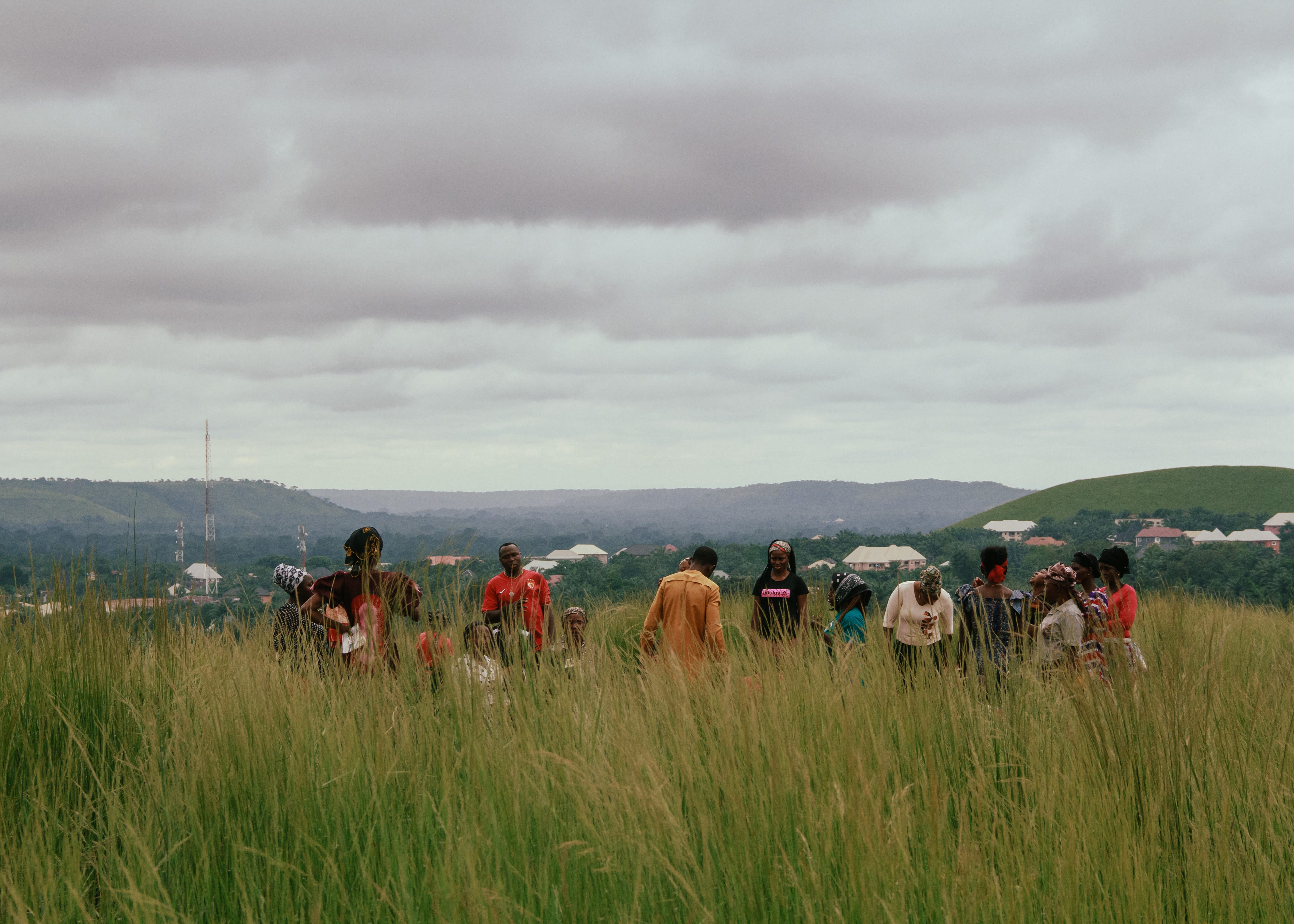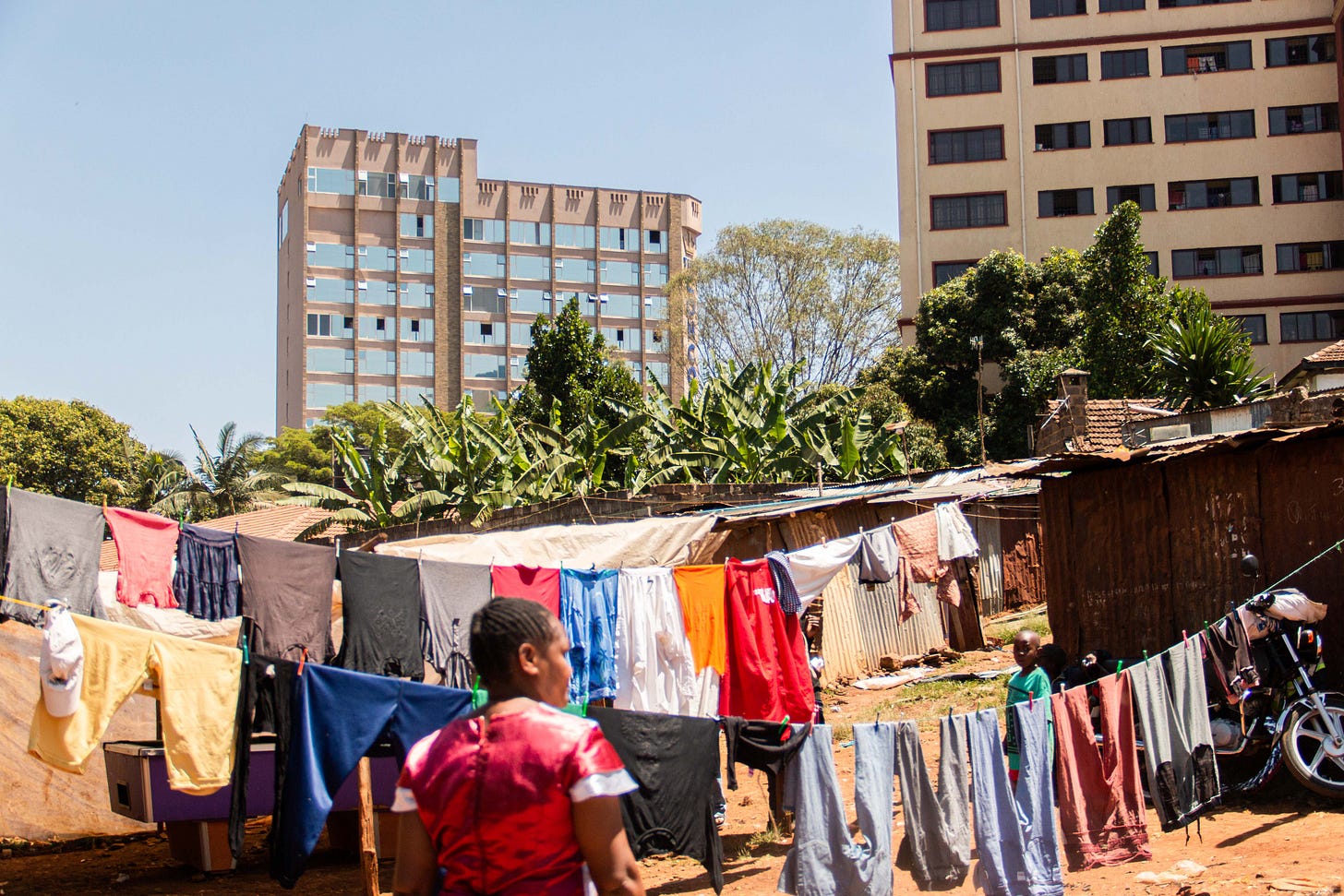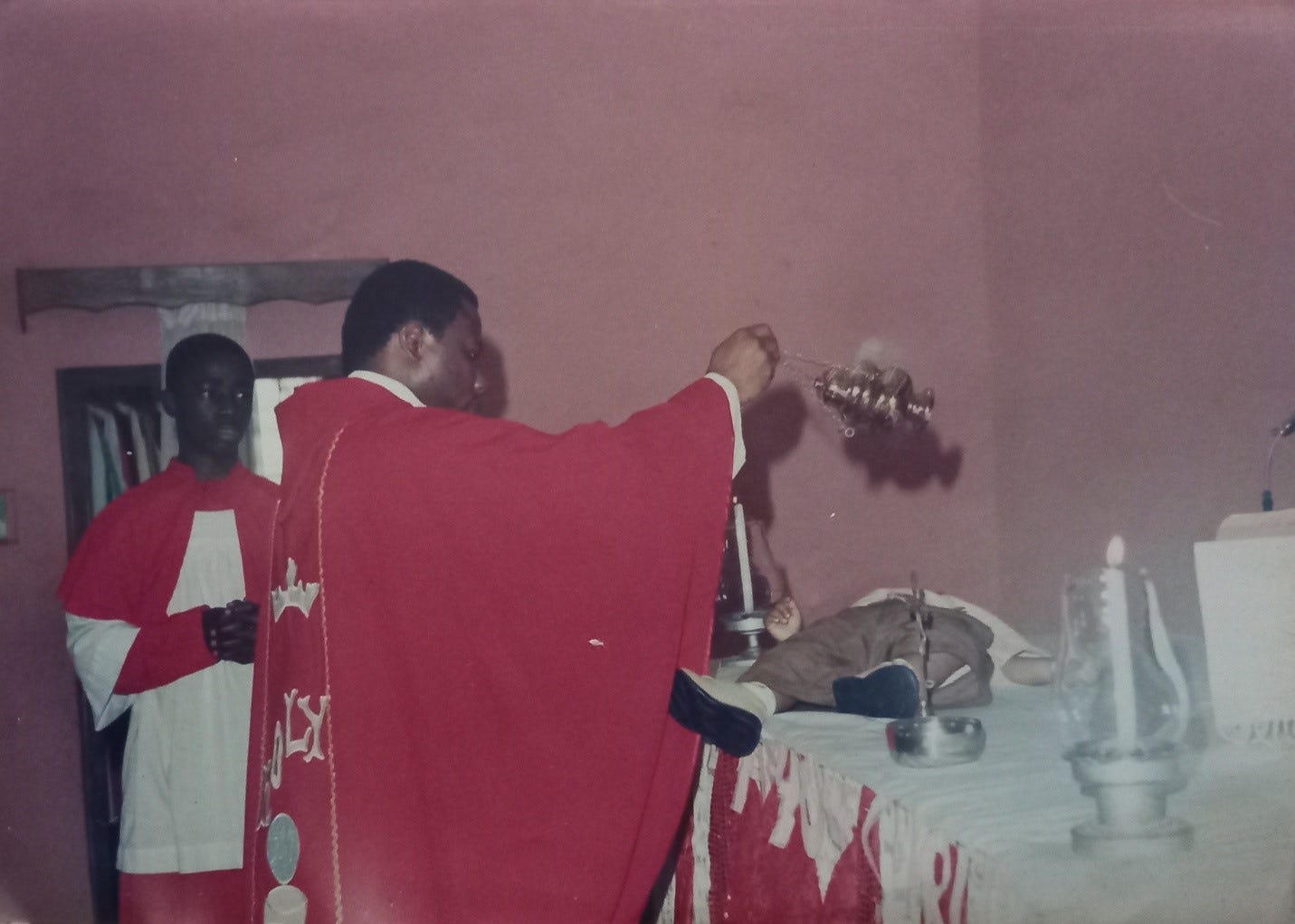Just as you might find a border between earth and sky in the photograph, so it is possible to approximate the perimeter around which the circle of people stand. Some are dwarfed by the grass, and others are inches above, but no leg can be seen. The photographer has come close enough to show the expressions on a few faces, yet, the picture is framed to indicate an encounter with a group and not individuals. The mood is serious, even anticipatory. It seems no mere coincidence that a number of people incline their hands forward, and some keep their eyes closed. The sepia-toned sky and line of hills might point to the reason for their seclusion, and the hopes with which they’ve gathered.
— Emmanuel Iduma
“The nature of things can be dignified and testified to by the attention of a photographer.”
The photograph was taken on Odim Hill, one of the many hills surrounding the University of Nigeria, Nsukka. I had been commissioned by a publication to photograph Nsukka and the university for the twentieth anniversary of Chimamanda Adichie's Purple Hibiscus. On one side of the hill, the expanse of the town sprawled before me in a sea of foliage and zinc roofs; on the other side was the university, its buildings miniaturised by distance into little chunks of concrete. Just a couple of meters away from me, was as group praying fervently, engaged in what I immediately identified as a deliverance session, having witnessed and been in several while growing up. I continued with my assignment and took two or three shots of the gathering offhandedly, in a way that wouldn't spook the people or make them uncomfortable. There were around three or four such groups littered on various parts of the hill, but this one was the largest and its members were the most animated.
I chose this photograph because I am not particularly fascinated with faith, but with elements of it practiced in Nigeria. When I was younger, my mother often berated me for not being loud enough while praying on my own. I suspected she felt that in asking from God, one's frenzied demeanour translated into the urgency with which one's request was granted, as would be the case when asking from a human being. I didn't think that was biblical, and so seeing this group on that hill felt like the replay of a familiar scenario, one involving a seemingly outlandish demonstration of faith in response to the "humanification" of God. I saw that gathering and imagined that the arduous climb to that altitude and its proximity to the sky, more than anything else, strengthened the faith of those people and placed them right before God, free and unhindered.
I think photography can be impactful in many ways, sometimes depending on the subject, and other times depending on the process through which the photograph was made. More than anything else, photography serves as a testament to things as they are. Not as a revelation of truth, just a testament to being; not true, not false, just existence. There are things which exist but are not accorded attention, but the nature of these things can be dignified and testified to by the attention of a photographer.
— Onyekachi Iloh
About Onyekachi Iloh
Onyekachi Iloh is a writer, poet, and visual artist exploring photography as a means of documentation, and the re-examination of sight. See more of his work on Instagram.
LAST WEEK
— “The Space Between,” by Josemarie Nyagah
I chose this photograph because it depicts the “space between” quite vividly. In the distance, one can see the high-rise buildings in the neighbouring community but in the foreground are the homes and hanging lines with clean laundry of Deep Sea residents.
— “The Unveiling,” by Zenas Ubere, in KINDRED
The altar is draped in red and white. On it lies a boy, supine, the black soles of his baby shoes visible. He has been kept amid two candle stands, a small metal crucifix inches away from his left foot, and above him hovers the hand of a priest, in whose fist the chains of a thurible are gripped. The priest, caught in profile, is dressed in vestments matching the altar cloths, and matching, as well, the vestments of the altar boy, whose interlaced fingers are held in front of him, as if in waiting.
SUPPORT TENDER PHOTO
This is the 85th edition of this publication, which also read on web (best for viewing images), and via the Substack iOS/Android apps.
Every Wednesday I feature one photograph and the photographer who took it: you’d read a short caption from me, and a statement from the photographer. Every Friday, I publish a series of commentaries in response to photographs previously featured on the newsletter. The ongoing series is KINDRED. My hope is to engage with early to mid-career African photographers, and to create a platform in which photographers lead the cataloguing and criticism of their work.
Photographers can now submit their work for consideration.
Thank you for reading. If this newsletter was shared with you, consider subscribing, or forward to a friend. Please whitelist the newsletter to ensure you never miss it.






